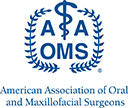People understand the importance of being healthy, exercising, eating well, and seeing their doctor regularly, but jaw alignment is rarely considered when it comes to overall health. A misaligned jaw can negatively affect your chewing function, your speech, your long-term oral health, and your appearance. Occasionally, orthodontic treatment can correct this problem. However, if the problem is more advanced and not addressed properly, it may cause periodontal disease, loss of orthodontic movements, jaw joint problems, and poor or even disastrous facial appearance, which may require oral surgery.
Orthognathic surgery, also called jaw surgery, corrects irregularities in the jawbone. The jaws and teeth are realigned to improve facial appearance and function. The surgery can correct dental and skeletal irregularities and improve eating, chewing, and speaking for patients. Additionally, the procedure may also enhance a person’s appearance. Functional issues resulting from jaw problems can be fixed with orthognathic surgery.
There are a number of conditions that can be successfully treated with corrective orthognathic surgery, including:
- Problems chewing, swallowing, or biting food
- An injury to the face
- An unbalanced facial appearance from the front or sides
- Malocclusions (bite problems) caused by underbites or severe overbites
- Joint pain or TMJ
- Sleep Apnea
- An open bite, a protruding jaw, or a receding chin
- Congenital defects, including cleft palate
- Mouth breathing
What is involved in surgery?
Prior to surgery, orthodontic braces are required to move your teeth into a new position. Upon completion of this phase of orthodontic treatment, your oral and maxillofacial surgeon will reposition the jawbones according to your needs. You may need bone to be added, removed, or reshaped. Surgical plates, screws, wires, and rubber bands may be used to hold your jaw in place. Most incisions are made inside the mouth to minimize visible scarring. However, in some cases, small incisions may be required outside of the mouth.
Surgery recovery
The recovery process can vary in length and difficulty depending on your personal situation and the level of correction needed. The majority of patients can expect to return to normal life within 1 to 3 weeks following surgery.
Risks of Orthognathic Surgery
Surgical procedures always carry some risk. Here are some of the common complications associated with orthognathic surgery.
- Bleeding issues
- Infection
- Nerve injury
- Jaw fracture
- Possibility of jaw relapse
- The need for root canal therapy on selected teeth
The orthognathic jaw surgery procedure is complex and requires special training and skills. If you require any type of jaw surgery, you should seek advice from an oral surgeon. Schedule a consultation with our oral surgery office today to learn more about the best treatment plan for you.






